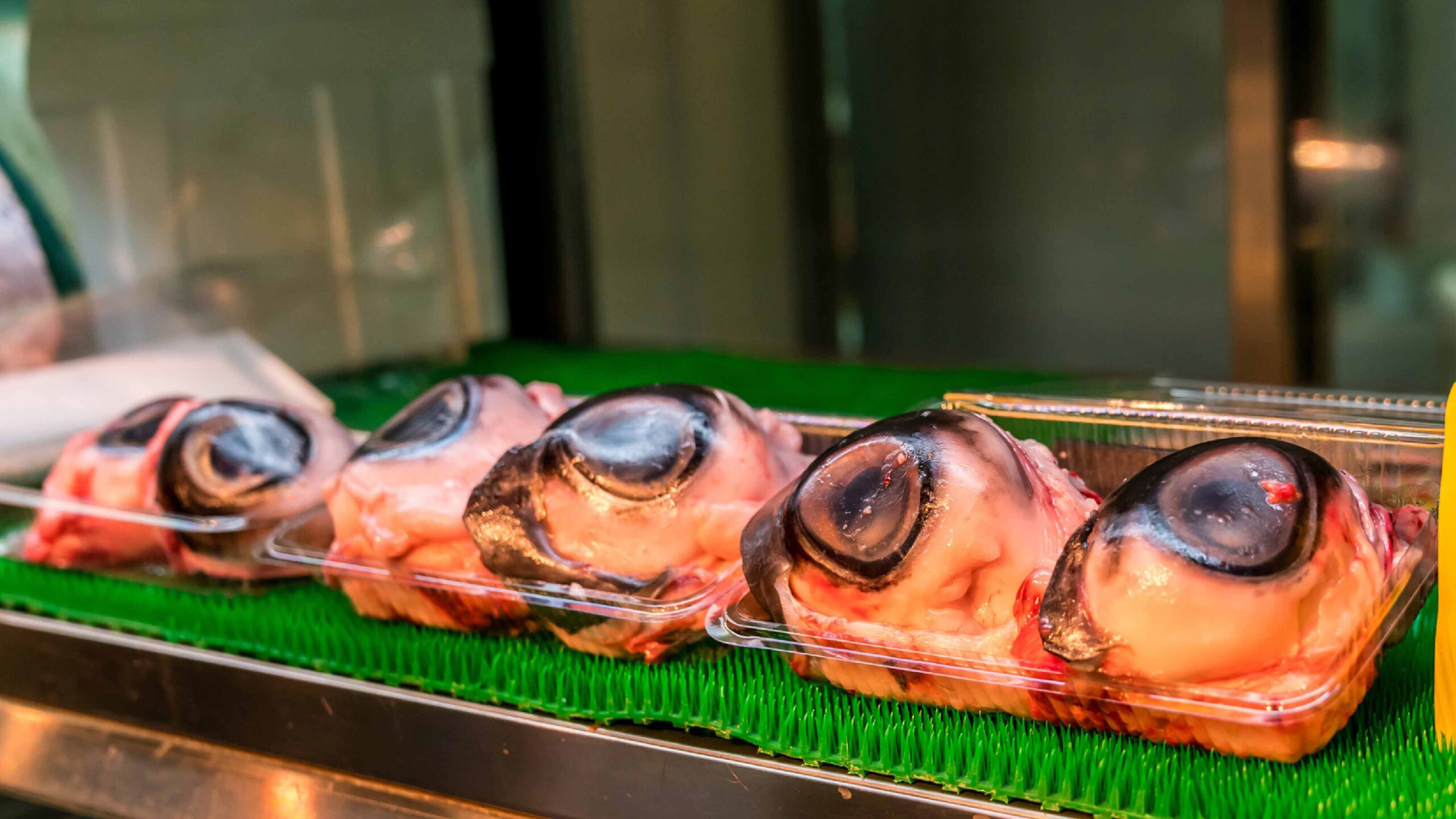In Japan, you might get a little scared after noticing that some unusual eyes are gazing at you in restaurants or bars. If you are adventurous enough, they might be looking at you from the plate from which you are about to eat! Interesting scenario, right? In the eye of the dish, or should I say the eye is the dish! Okay, relax; you don’t have to be confused. I’m talking about one of the favorite delicacies from Japan: Tuna Eyeballs. Unlike most bizarre foods, the eyeballs of tuna fish was not born in ancient times or born out of poverty. It became popular in the early 90’s. Nowadays, Tuna eyes are served in various places around Japan and East Asia.
You can taste the tuna eyeballs in many different ways: cooked, fried, stewed or lightly steamed. Japanese chefs cook the fleshy, tennis ball–sized eyeballs as appetizers or bar snacks. The sclera of tuna’s eyes is not usually eaten because of its firm and chewy texture. Nevertheless, everything else inside is linked to bone marrow, which becomes soft and tender upon cooking.
There are many preparations of this dish, most widely it is boiled in water and seasoned to taste with soy sauce, sugar, mirin (a rice wine similar to sake). They are also enjoyed with a few slices of lemon, ginger and rice vinegar.
The eyeballs themselves are rather bland. Most tasters describe them having similar taste to squid, mussels, or hard-boiled egg. The cooked eyeballs are served one or two at a time, alongside other dishes. Sometimes, people pair them with a shot of “tuna’s tears,” a rare drink made with soju and raw tuna lens.
Tuna eyeballs have a high content of proteins and Omega 3 fatty acids. It is beneficial for a series of cardiovascular benefits, prevent heart irregularities and arrhythmias, and improve the percentage of good cholesterol over bad cholesterol in the organism. It is good for boosting energy, strong bones, and healthier hearts. So, when you are eyeing to taste one?






